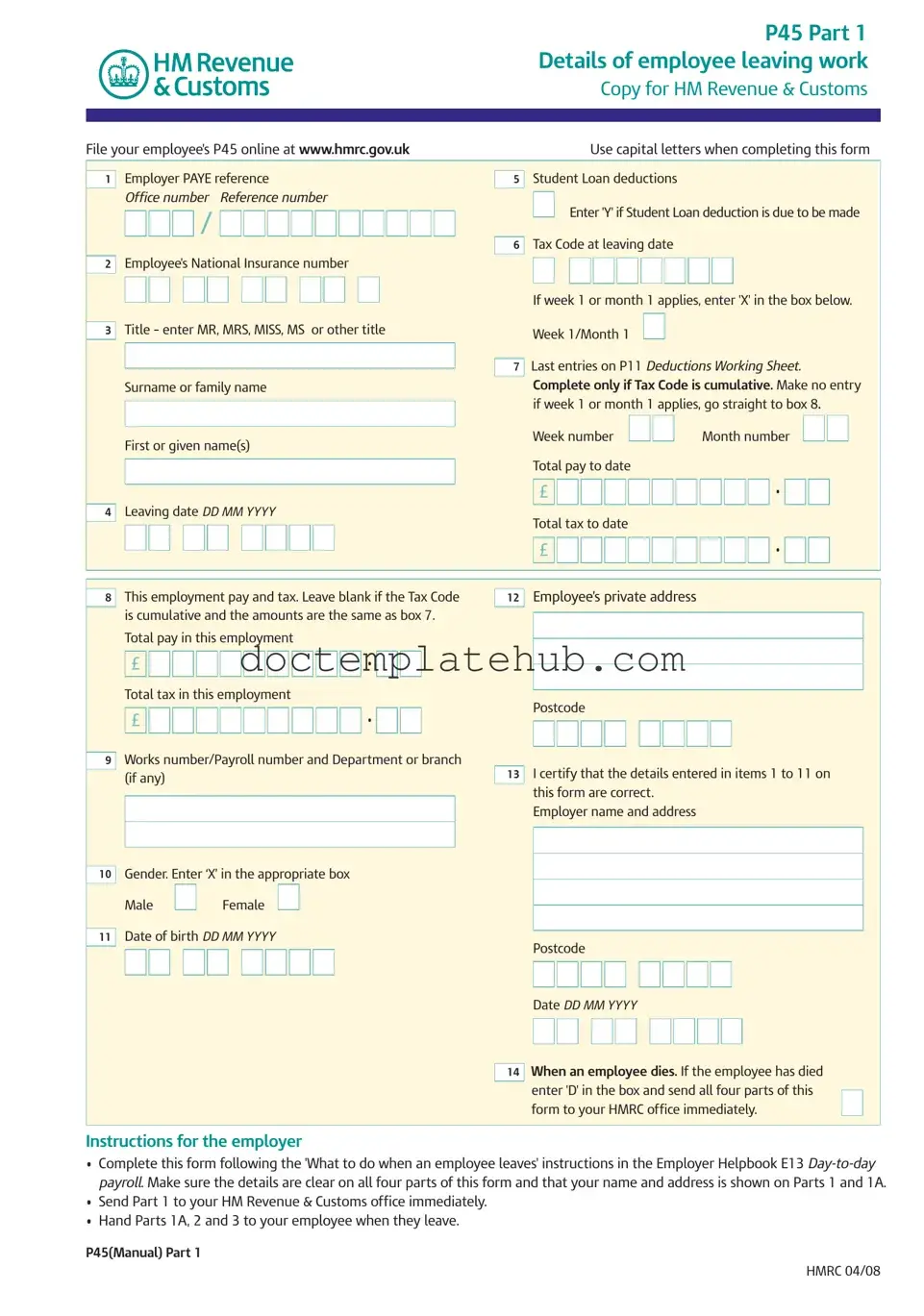What is a P45 form?
The P45 form is a document issued by an employer when an employee leaves their job. It provides important information about the employee's earnings and the taxes that have been deducted during their employment. The form is divided into three parts: Part 1 for HM Revenue & Customs (HMRC), Part 1A for the employee, and Parts 2 and 3 for the new employer.
Who receives a P45?
When an employee leaves a job, they receive Part 1A of the P45. The employer keeps Part 1 for HMRC and gives Parts 2 and 3 to the new employer. It’s essential for the employee to keep Part 1A safe, as they may need it for tax returns or when applying for benefits.
What information is included on a P45?
A P45 contains several key details, including the employee's name, National Insurance number, tax code, total pay to date, total tax deducted, and the leaving date. This information helps ensure that the employee is taxed correctly in their new job or when claiming benefits.
How should I complete a P45?
When filling out a P45, use capital letters for clarity. Ensure that all required fields are completed accurately, including the employee's PAYE reference, National Insurance number, and total pay and tax amounts. If the employee's tax code is cumulative, only complete specific sections as indicated on the form.
What should an employee do with their P45?
Employees should keep Part 1A of the P45 for their records. It may be needed for tax returns or when applying for benefits. Parts 2 and 3 should be given to the new employer to avoid emergency tax codes, which could lead to overtaxing.
What if I lose my P45?
If an employee loses their P45, they should contact their previous employer to request a replacement. If that's not possible, they can still provide their new employer with their earnings and tax information from their last payslip, but this may result in a temporary emergency tax code.
Can I claim tax back using my P45?
Yes, if you have overpaid tax while employed, you can claim a refund using your P45. This typically happens when your total earnings for the year are below the personal allowance threshold. To claim, you may need to fill out a form and provide your P45 to HMRC.
What happens if an employee dies?
If an employee dies, the employer must mark the P45 form with a 'D' and send all parts of the form to HMRC immediately. This ensures that the tax affairs of the deceased are handled correctly and any necessary arrangements are made.
How does a P45 affect new employment?
A new employer uses the information from Parts 2 and 3 of the P45 to set up the employee's tax code and ensure proper tax deductions. If the new employer does not receive these parts, the employee may be taxed at a higher emergency rate until the correct information is provided.
